
How Many of These International Chanukah Donuts Have You Tried?
When it comes to Jewish holidays, some often joke that the celebrations revolve around a similar pattern: “They [our enemies] tried to kill us, they couldn’t kill us, so let’s eat!”
Chanukah originates in the middle of a literal war on our Jewish way of life. Surviving forced assimilation by threat of death is a big deal, and one that continues to this day in many forms. Standing up for ourselves is exhausting, so getting to celebrate our Jewishness with happiness and light is made even more enjoyable by celebratory food as well!
The tradition of eating fried foods on Chanukah is founded in the miracle of the menorah — it remained lit in the Beis HaMikdash for eight days with a single day’s bottle of the purest oil. Now, the consumption of oily foods is nearly as old as the Chanukah story itself, and the importance of this minhag has been passed through the generations and across the Jewish diaspora.
While the word “sufganiya” is a relatively modern term, the root of the word and all its variations is “sofgan” and “sfogga.” In the Talmud, this refers to “spongy dough.” The history continues via the writings of Rabbi Maimon ben Yosef (father of Rabbi Moshe Maimonedes) in the 12th century, in which he writes about the importance of consuming “sofganim” to commemorate Chanukah and its miracles. “One must not make light of the custom of eating sofganim on Chanukah. It is a custom of the Kadmonim [the ancient ones].”
Jews who were forced to flee and make their lives in other countries have adopted and adapted their host culture’s fried delicacies. For example, the fritters mentioned by Rabbi Maimon ben Yosef were likely a sweet, syrup-coated pancake, which is quite different from the contemporary jelly-filled donut, and even more dissimilar to the artisanal donuts that have become popular in the past few years. The journey from sofganim to the modern sufganiyot is a long and winding one — and luckily an utterly delicious one!
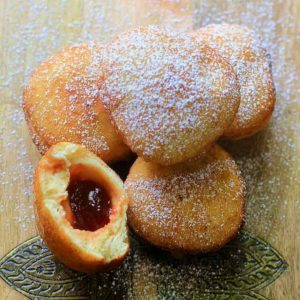 Poland: ponchiks
Poland: ponchiks
In the sixteenth century, the price of sugar fell with the introduction of Caribbean sugar plantations. Soon sugar — and in turn, fruit preserves — proliferated in Europe. In its wake, a German cookbook, the Kuchenmeisterei, which included the recipe for Gefüllte Krapfen: “a bit of jam sandwiched between two rounds of yeast bread dough and deep-fried in lard.” These widely popular treats spread from Eastern Europe to the West over time, and each country had a name for them. Most particular to this history, Polish Jews named their kosher, oil-fried donuts “ponchiks.”
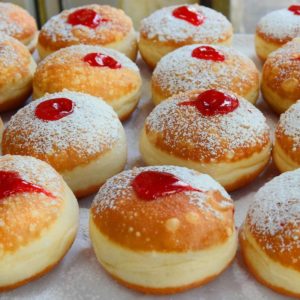 Israel: sufganiya
Israel: sufganiya
When Poles emigrated to Israel, they brought ponchiks with them. Then, in the late 1920s, the Histadrut (Israeli labor federation) decided to promote ponchiks — now dubbed sufganiyot — given that they were difficult for home-cooks to make, in an attempt to increase the amount of jobs available to its members. The promotion worked like a charm, and jelly-filled, sugar-topped sufganiyot have since become internationally emblematic to the holiday. Today, sufganiyot are the most popular Chanukah treat in Israel, and bakeries begin churning out delicious fried pastries well before the holiday itself — taking the “donut crawl” to a new level.
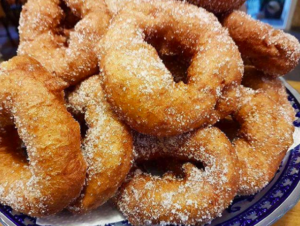 Morocco: sfinj
Morocco: sfinj
One of the names for donuts that did not stray far from the original etymology, sfinj originates in North Africa — and is even credited with bringing the donut to Europe via Jewish traders.
Sfinj are known for being relatively simple to make compared to sufganiyot; in further contrast to ponchiks, these were popular and easy to make at home. Sfinj are ring-shaped pastries fried in oil, and are usually sweetened by dipping them into honey or sprinkling them with sugar. This humble donut is attributed to Morocco, but is generally popular to the Jewish population across North Africa.
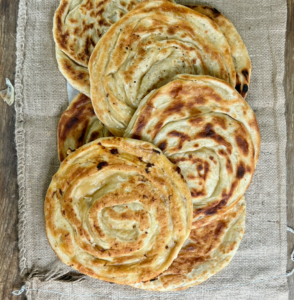 Yemen: malawach
Yemen: malawach
More of a bread than a pastry, malawach is made of laminated dough rolled into circular shapes, which is then fried in oil; it is made of the same dough as jachnun, a Shabbat treat cooked overnight. Malawach is a rich, flaky flatbread that is often served as the central starch of Yemenite meals, used to dip into various condiments and salatim, or alongside hard-boiled eggs.
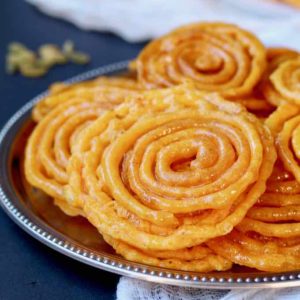 Egypt: zalabia
Egypt: zalabia
Sometimes food bridges the gap between different cultures: zalabia is one of those. A favorite of both the Jewish and Muslim populations of Egypt — as well as many other cultures in the region — these balls of dough deep fried in oil and drenched in honey played a significant role in holiday celebrations for both peoples. While Muslims made zalabia for Ramadan, Jews made these donuts for Chanukah.
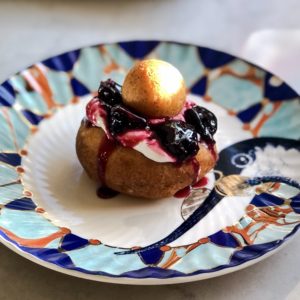 Romania: papanasi
Romania: papanasi
As the child of a Romanian Jew, I (and said parent) was shocked to only now learn about the favored Chanukah donut of the region in this research process. Papanasi are filled with cheese and topped with cherry jam and sour cream (the cherries and cream are characteristic, however, to other elements of the cuisine). Traditionally made with soft curd cheeses, the snowman-shaped papanasi are similar in taste to blintzes. Since they incorporate cheese, papanasi also fulfills the tradition of eating dairy on Chanukah to commemorate Yehudis’s plan to murder General Helifornes.
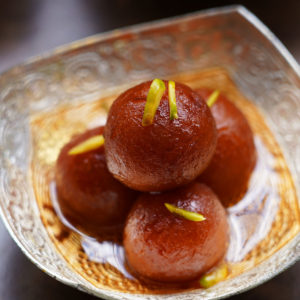 India: vada, jalebi, and gulab jamun
India: vada, jalebi, and gulab jamun
We cannot discuss South Asian food culture and not mention the penchant for sweets, particularly fried ones. With many options to choose from, the various Indian Jewish communities welcomed them into their Chanukah celebrations. Vada is unique on this grand list in that it is more of a savory fritter; there are many food items that can be used as the base of the dough — such as legumes — and they are flavored with spices. Jalebi is a regional variant of zalabia, and is also shaped like a funnel cake. Cooked at a relatively low temperature for a while, gulab jamun is then soaked in sugar syrup and various flavor additives such as saffron, rosewater, and green cardamom.
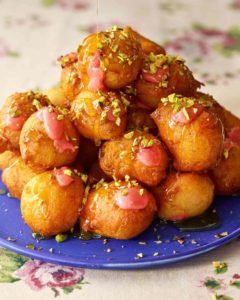 Spain: bimuelos
Spain: bimuelos
These fritters have varying names across Spanish-speaking countries, and are most commonly referred to as “buñuelos.” There are nearly as many methods for making them, but bimuelos is the Ladino name for this treat. In fact, descendants of Marranos have eaten bimuelos even in the present day, although due to their upbringing they didn’t quite know why these were traditional to eat in the early winter. Buñuelos are usually made with wheat-based yeast dough and made to be sweet or savory. Where sweetness is concerned, there is an abundance of options — they can be filled with small curd cheese, banana, pumpkin, and yam, and topped with sugar, honey, orange blossom water… the list goes on and on!
If you found this content meaningful and want to help further our mission through our Keter, Makom, and Tikun branches, please consider becoming a Change Maker today.







